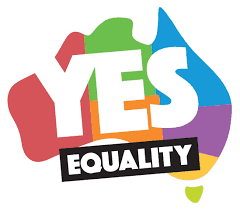Flowers Glossary
(Courtesy turningpoint2.tumblr.com)
Aisle flowers: Floral arrangements which mark the aisle at regular intervals. Small arrangements can be attached, with ribbons, to the sides of aisle chairs or can be displayed in tall vases or vessels. In a church wedding, aisle flowers are also be referred to as “pew flowers”.
Autumn flowers: Flowers which only bloom during autumn months (March – May) such as: agapanthus, aster, clematis, daisy, hydrangea and passion flower.
Bouquet preservation: Brides who want to preserve their bouquet as a keepsake of their special day may do so by hanging it upside down and drying it for several weeks. There may be specific preservation techniques for certain flowers so consult your florist if you are planning to preserve your bouquet.
Bouquet ribbon: The ribbon wrapped around the stems of the flowers in the bouquets. Satin is a popular bouquet ribbon choice but many brides also request extra fabric from their dressmaker and use it as bouquet ribbon in order to keep a consistent colour scheme.
Boutonnieres: Also known as buttonhole flowers. These are small floral arrangements which are displayed in the button holes of the groom, groomsmen and other men in the ceremony, such as the father of the bride. The flowers in the boutonnieres usually match the bride’s bouquet and may contain small clippings of her flowers.
Bridal bouquet: The flower arrangement which the bride carries as she walks down the aisle. This is usually the largest arrangement of the wedding and often contains the most expensive and striking flowers.
Bridesmaids’ bouquets: The flower arrangements held by the bridesmaids as they walk down the aisle. The bridesmaids’ bouquets are usually considerably smaller than the bride and may contain different flowers of the same colour scheme.
Cake flowers: Real flowers which are placed on the wedding cake to enhance its appearance and unite it with the decorations and wedding theme. These flowers are not edible so are removed during the cutting of the cake.
Cascading Bouquet: Also known as a shower bouquet or trailer bouquet. This is a large, formal bouquet, featuring flowers which flow downwards in an upside-down teardrop shape. The flowers are attached to a handle which the bride usually holds with two hands, as the flowers elegantly spill over her hands.
Corsage: A small floral arrangement, much like a boutonniere, which is worn on the wrists or pinned to the shoulder of the women in the ceremony. Mothers of the bride and groom usually wear a corsage as do any special relatives, such as aunts or grandmothers, whom the bride and groom would like to make special acknowledgement of.
Crescent bouquet: A bouquet of flowers which are wired together in such a way to appear in the shape of a crescent moon. Shorter flowers are displayed in the centre whilst longer ones taper down towards the ends. Florists usually fashion this bouquet with a wire handle so that the bride can carry the bouquet single-handedly.
Flower girls: Young girls who carry baskets of flower petals and walk down the aisle before the bride, scattering petals as they walk.
Hair flowers: Floral arrangements attached to hair pins or arranged as ‘crowns’ which are usually worn by the flower girls but can also be worn by the bride and bridesmaids.
Pew flowers: Floral arrangements which are attached to the ends of the pews to enhance the atmosphere of a church wedding. Pew flowers need not be attached to every pew but can be displayed at regular intervals down the aisle.
Pomander bouquet: A small, ball-shaped flower arrangement, attached to a string. Pomander bouquets are most commonly carried by flower girls but may also be carried by the bride and/or bridesmaids.
Posy: A small, round bouquet which is easily held in one hand. Bridesmaids usually carry posies but a bride may carry one to achieve a minimalist look.
Reception decorations: Floral arrangements which are displayed around the room to enhance the mood and atmosphere. Reception flowers can be placed at the entrance, on guest tables, on the gift table, on the cake table and/or near the seating chart display.
Seasonal flowers: Flowers which only bloom during certain months of the year. Consult your florist to find out which flowers will be available at the time of your wedding.
Sheaf bouquet: Also known as a presentation bouquet. This bouquet features long stemmed flowers which the bride cradles in one arm. A sheaf bouquet can be arranged so that only flower heads, and no stems, are displayed.
Spring flowers: Flowers which only bloom during spring months (September – November) such as: amaryllis, anemone, daffodil, ranunculus, stephanotis and sweet pea.
Summer flowers: Flowers which only bloom during summer months (December – February) such as: anthurium, gypsophila, magnolia and peony.
Table centrepieces: Floral arrangements which are displayed in vases, or other vessels, on the guests’ tables. Table centrepieces usually feature some of the more expensive and dramatic flowers of the wedding celebration.
Toss bouquet: For brides who wish to preserve their bouquet, they may wish to have another smaller bouquet made up which replicates the bridal bouquet but can be more easily tossed to the single ladies at the reception.
Winter flowers: Flowers which only bloom during winter months (June – August) such as: camellia, iris, pansy, poinsettia, snowdrop and tulip.
Year round flowers: Flowers which bloom all year round, rather than seasonally. Roses, lilies, orchids, sunflowers, gerberas, chrysanthemums and carnations are popular choices for wedding flowers due to their year round availability.





